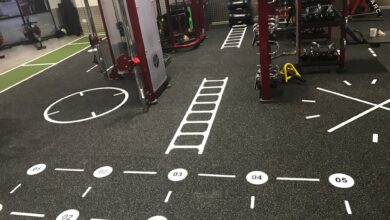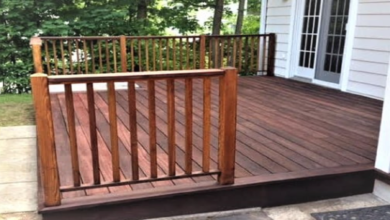Extending Interior Design to Outdoor Spaces

In the realm of interior design, the boundaries between indoor and outdoor spaces are becoming increasingly blurred. Homeowners are recognizing the potential of transforming their outdoor areas into extensions of their interior living spaces. This article delves into the concept of extending interior designing principles to outdoor spaces, exploring the benefits, key considerations, and innovative ideas that can turn your backyard or patio into a seamless and stylish continuation of your home.
Functionality and Flow:
When extending interior design to outdoor spaces, the first consideration is functionality. Think of your outdoor area as an additional room, with its own purpose and flow. Define specific zones for dining, lounging, and other activities. Establishing a clear layout enhances the overall usability of the space, making it an inviting extension of your home rather than a separate entity.
Consistent Design Aesthetics:
Maintaining a consistent design aesthetic between indoor and outdoor spaces fosters a harmonious visual transition. Carry over color schemes, patterns, and materials from the interior to the exterior, creating a cohesive look. This unity blurs the lines between inside and outside, making the entire property feel like a well-thought-out and interconnected living environment.
Furniture as a Bridge:
Selecting the right outdoor furniture is crucial in achieving a seamless extension of interior design. Opt for weather-resistant pieces that echo the style of your indoor furniture. Consider upholstered outdoor sofas, stylish dining sets, and weatherproof accent pieces. Investing in quality outdoor furniture not only enhances the visual appeal but also ensures durability against the elements.
Outdoor Rugs and Flooring:
Just as indoor flooring sets the tone for a room, outdoor rugs and flooring contribute to the atmosphere of your exterior space. Weather-resistant rugs and outdoor flooring materials, such as stone, tile, or composite decking, create a comfortable and visually pleasing foundation. This not only adds warmth to the area but also serves as a visual cue for the seamless transition from inside to outside. Read more: https://googleforbes.com/
Weather-Resistant Fabrics:
Incorporating weather-resistant fabrics into your outdoor design ensures longevity and comfort. Outdoor cushions, pillows, and upholstery that resist fading and mildew are essential for maintaining a polished look. Additionally, these fabrics allow for continuity in design, enabling you to use similar patterns and colors both indoors and outdoors.
Lighting for interior design Ambiance:
Outdoor lighting is a crucial element in extending interior design principles to the exterior. Implement a well-thought-out lighting plan that includes ambient, task, and accent lighting. String lights, lanterns, and strategically placed fixtures not only create a cozy atmosphere but also allow you to enjoy your outdoor space well into the evening, mirroring the indoor experience.
Greenery and Landscape Integration:
Incorporating greenery seamlessly connects indoor and outdoor spaces. Strategically placed plants, potted trees, and vertical gardens not only enhance the aesthetics but also provide a natural transition. Consider the landscape as an extension of your interior design palette, using plants to complement the color scheme and style of your home.
Privacy and Shelter:
Creating a sense of privacy and shelter in your outdoor space is essential for comfort and relaxation. Use outdoor curtains, pergolas, or strategic landscaping to define your space and provide a feeling of enclosure. This not only adds a layer of intimacy to your outdoor area but also mimics the sense of coziness found in well-designed interior spaces.
Seasonal Adaptability:
Extend the use of your outdoor space throughout the seasons by incorporating elements that adapt to different weather conditions. From outdoor fireplaces or heaters for colder months to retractable awnings or shades for hot summers, designing for seasonal changes ensures year-round enjoyment and functionality.
Technological Integration:
Bring the conveniences of the indoors to your outdoor space with technological integrations. Consider outdoor speakers, smart lighting systems, and weather-resistant TVs to create an entertainment hub. This not only enhances the functionality of the space but also aligns with the modern, tech-savvy trends seen in contemporary interior design.
Water Features and Outdoor Art:
Elevate your outdoor space by incorporating water features and outdoor art. A well-placed fountain, pond, or sculpture can serve as a focal point, adding a touch of luxury and sophistication. These elements not only contribute to the aesthetic appeal but also create a sensory experience reminiscent of well-designed interior environments.
Multifunctional Furniture:
Maximize the utility of your outdoor space by choosing multifunctional furniture. Consider storage benches, ottomans with hidden compartments, or convertible tables that can serve various purposes. This not only adds practicality to the design but also mirrors the space-saving principles often applied in well-designed interiors.
Conclusion:
Extending interior design principles to outdoor spaces is a dynamic and exciting approach to creating a cohesive living environment. By considering functionality, maintaining consistent design aesthetics, and incorporating weather-resistant elements, homeowners can seamlessly blend the boundaries between inside and outside. From furniture and flooring to lighting and landscaping, the choices made in designing outdoor spaces can elevate the overall living experience and create a harmonious flow that connects the beauty of nature with the comfort of home.



